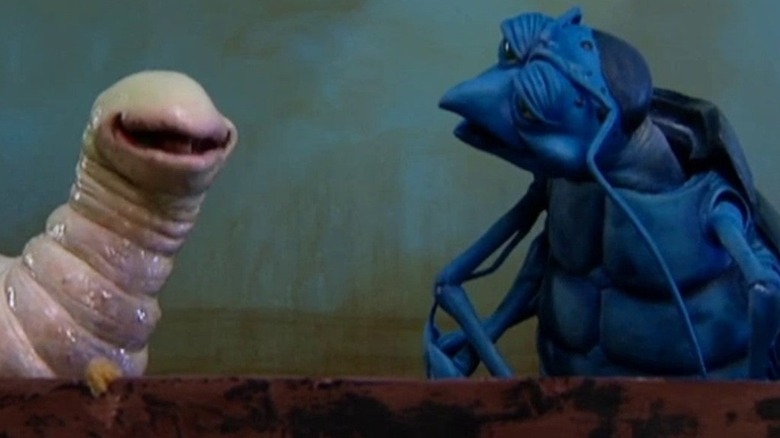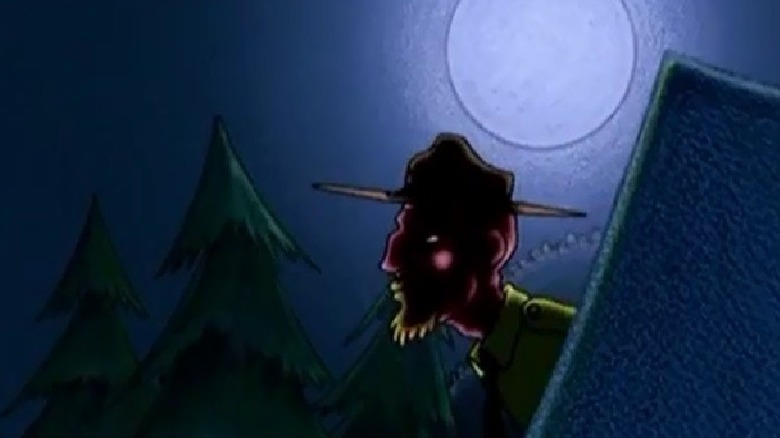The Creepy Anthology Show From The '90s You Never Watched
The '90s isn't regarded as the golden age of the horror genre on the big screen, but it did thrive on television. Shows such as "Twin Peaks," "The X-Files," "Charmed," and "Buffy the Vampire Slayer" became instant cult hits that are still celebrated to this day, and you'd be hard-pressed to find a viewer who isn't at least familiar with their concepts. The decade also produced some brilliant spooky shows for children, including "Goosebumps," "Are You Afraid of the Dark?" and "Eerie, Indiana," which was directed by none other than Joe Dante. Some of their episodes gave adult horror a run for its money in the scary department, and they're still highly regarded because they didn't try to sugarcoat the genre's darker themes from younger viewers.
Anthology horror shows were also quite popular in the '90s. "Tales from the Crypt" led the charge, and the franchise even targeted the children's market with the animated series "Tales from the Cryptkeeper." These spooky series are still fondly remembered by horror aficionados who grew up during the era, but there is one likeminded series that barely gets any recognition these days.
Freaky Stories was like The Twilight Zone for kids
Rod Serling's "The Twilight Zone" is arguably the most influential horror and sci-fi-themed series ever created, and its impact extends to kids' entertainment as well. Then again, considering that Serling's series and many kid-friendly horror shows are cautionary tales that boast a strong moral component, they shouldn't be considered strange bedfellows. "Freaky Stories" was of a similar school of thought to its legendary predecessor, but the show was very much its own beast entirely.
As Screen Rant recalled, the hosts of "Freaky Stories" were animatronic puppets – a maggot and a cockroach, to be more specific – who hung out in a 1940s-style diner. They began each episode by convincing viewers that each tale was based on a true story, in turn, introducing a series of bizarre scenarios that defied comprehension. Many of the freaky stories in question were based on urban legends, so they stemmed from reality to some extent, right? Some episodes expertly mined terror from everyday moments that were entirely plausible, such as rat-infested inns and mattresses full of cockroaches. These are terrifying notions even in adulthood. Other episodes were more out there, introducing youngsters to vampires, invisible people, and robot police officers. "Freaky Stories" didn't have an in-house animation style either, and this gave the animators to dabble in from macabre Gothic horror to surrealism. No tale was the same – visually or narratively – and this approach made for some exciting television.

